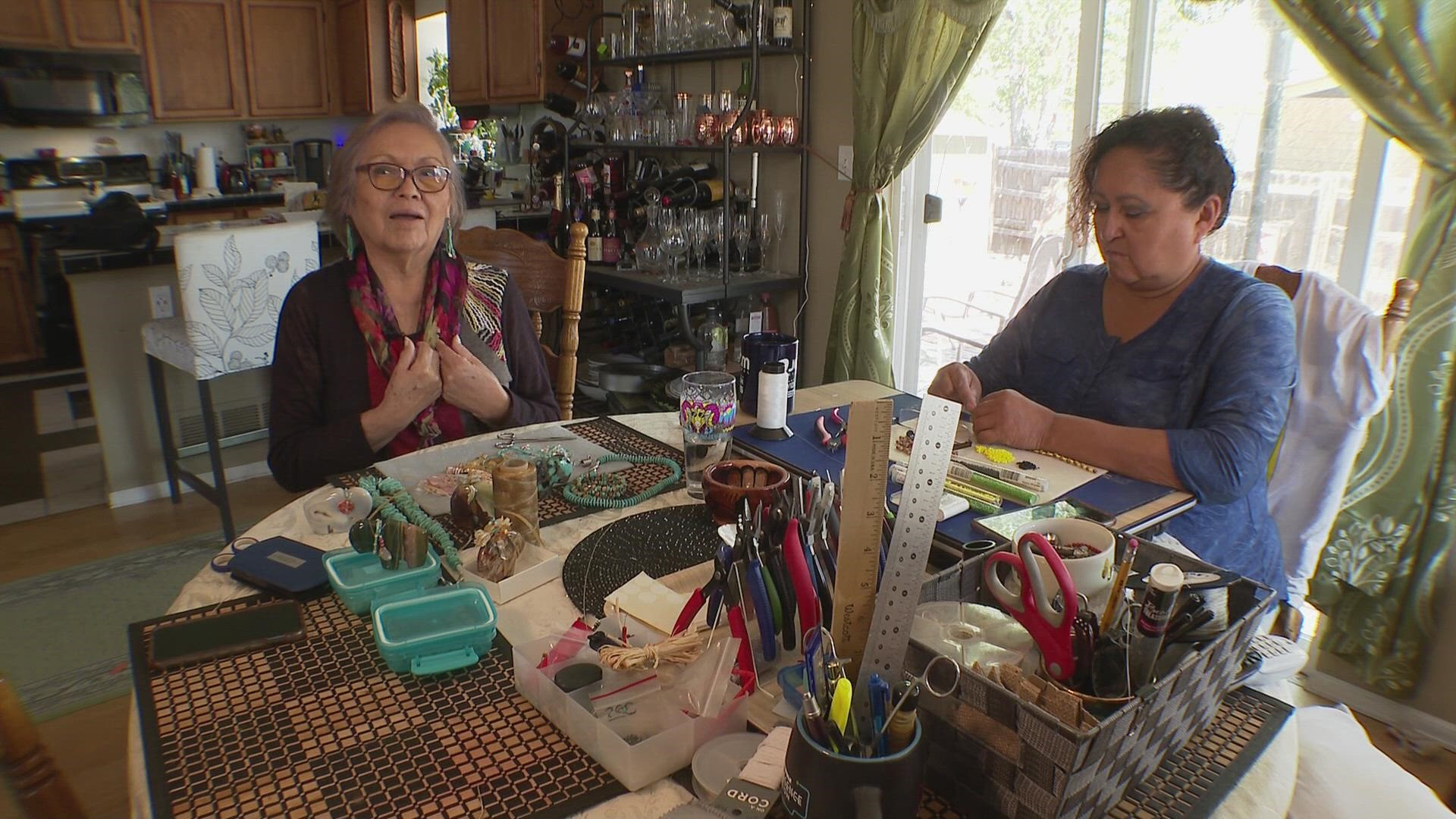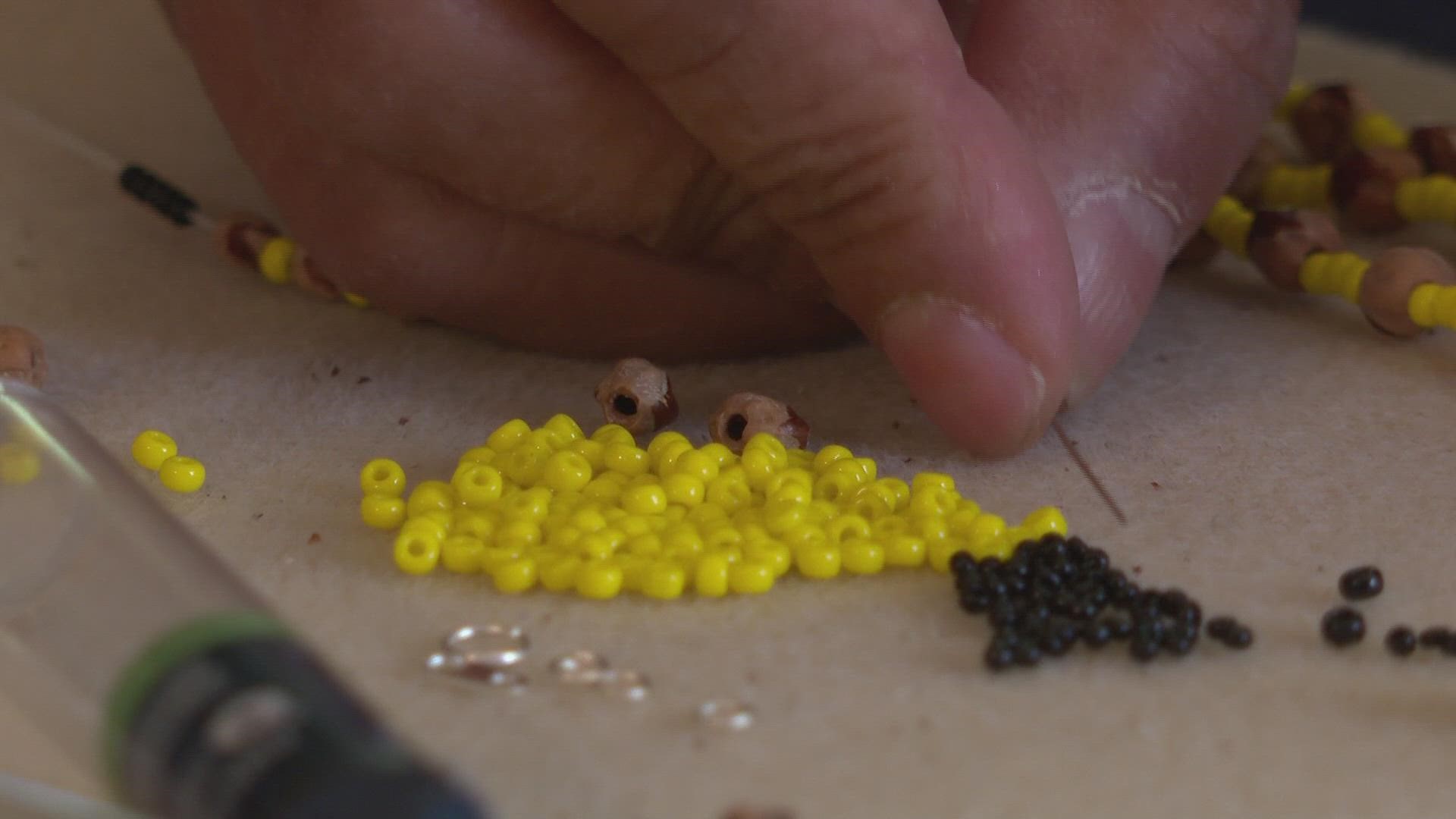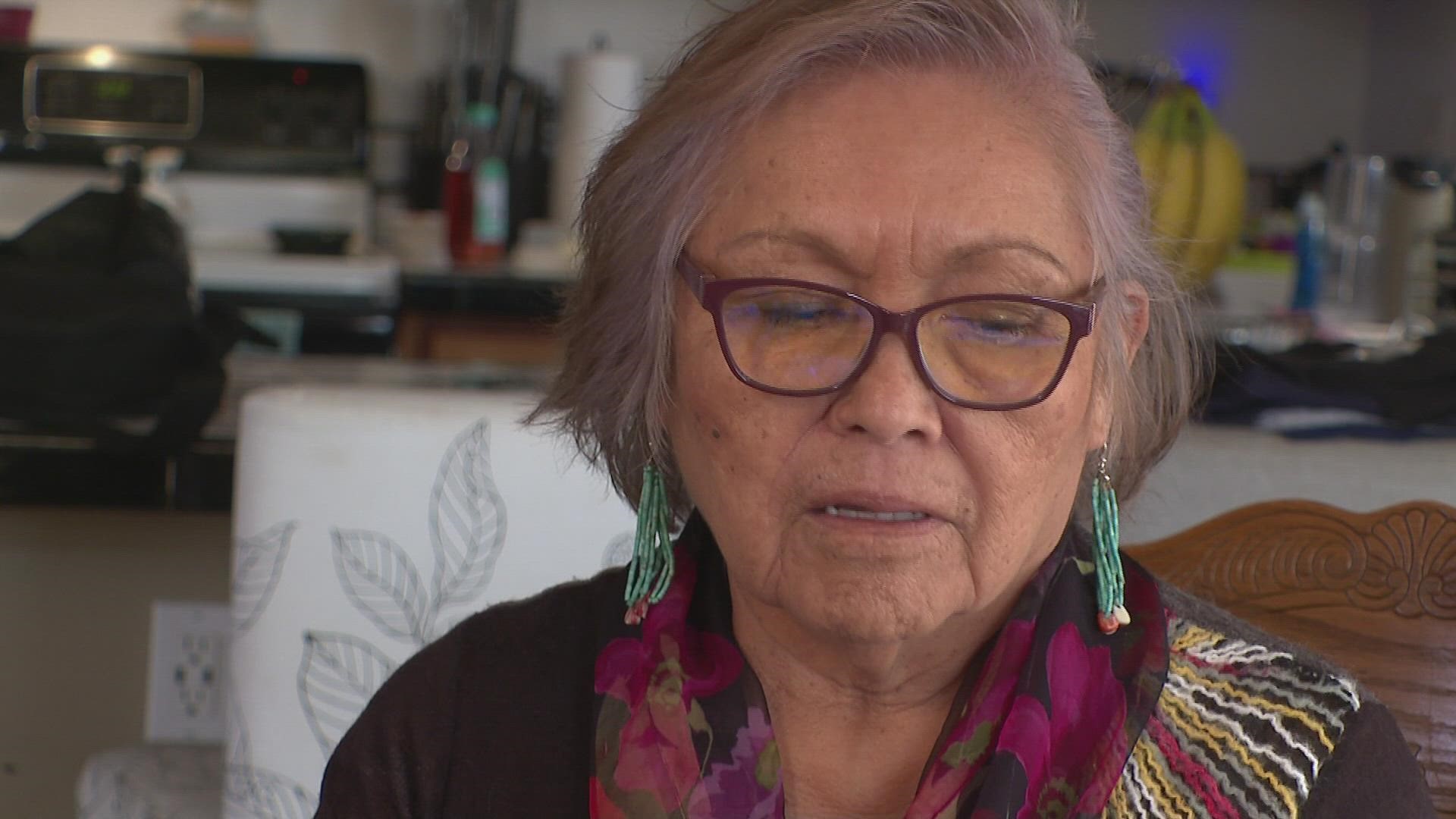DENVER — At a kitchen table in Denver, pride replaces fear as Bessie Smith and her daughter, Tina, make traditional Navajo jewelry.
It's the kind of jewelry Smith grew up wearing until she was 11-years-old, when she had to strip herself of the jewelry and everything she'd ever known growing up on the Navajo reservation in Arizona.
“My identity was Dzabahe," Smith said of her Dine name. "Then when I got to boarding school I couldn’t use that name anymore because that represented my identity as this Navajo child."
The federal government gave her the name Bessie.
She became one of potentially thousands of indigenous children taken from their home and forced to assimilate into white culture at an Federal American Indian Boarding School.
A report released by the Department of Interior this week documents 408 such schools operated by the United States, five of which are in Colorado.
The investigation found psychological and physical abuse endured by indigenous children from 1819 to 1969.
Not only were the schools used to strip children of their Native culture, but the report found they were also a means for the government to take Native land.
Smith, now 80-years-old, hopes this work will begin a healing process that so many never got.
“If we got caught speaking our language between other students or other people who lived at the dormitory, we would get punished," she said of her time at an Arizona boarding school. "Food was one of the punishments, food, and so you couldn’t go to dinner and if you committed what they considered to be a serious offense."
The psychological abuse caused Smith to reject her culture and become ashamed of her own family.
"I could not tell my parents because they didn’t speak English," she said. "They didn’t speak the language that I was suffering in. So that is the pain itself, too."
It would be many years before Smith began to take back what was taken away.
“My identity was on a shelf because I had lost the pride in my own self and that included doing jewelry, and wearing jewelry wearing the clothing," she explained.
Stringing beads, one by one, healed her.
“It’s therapy," Smith said.
But the name she had as a child was still gone.
“Somehow my heart was attached to my name so I always wanted to get that back," said Smith.
It's how the mother-daughter pair came up with the name of their jewelry business. Her name. Dzabahe.
“Now I’m at the point of not feeling like I’m a victim anymore," said Smith. "I feel like I have travelled this journey through all these years and now I can say I survived. And I’m me."
SUGGESTED VIDEOS: Full Episodes of Next with Kyle Clark




